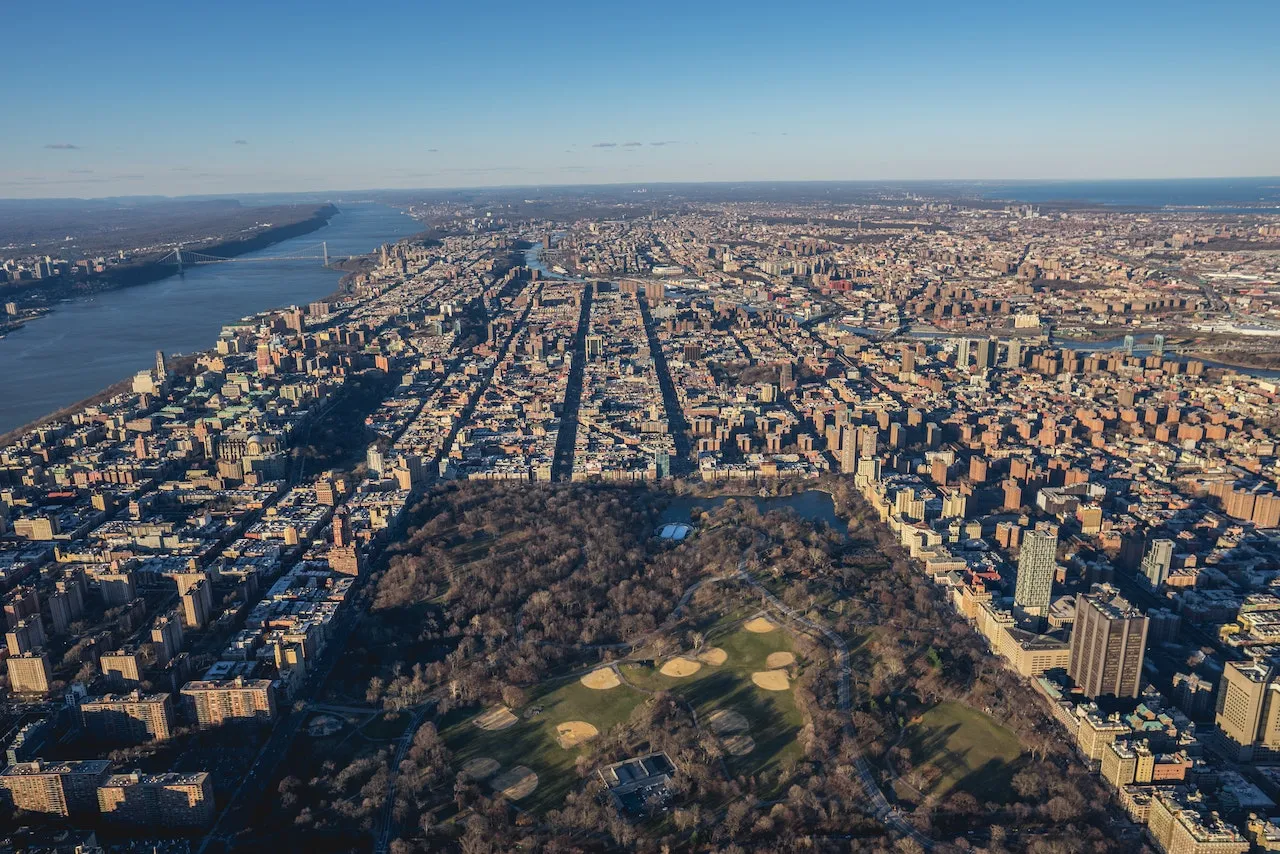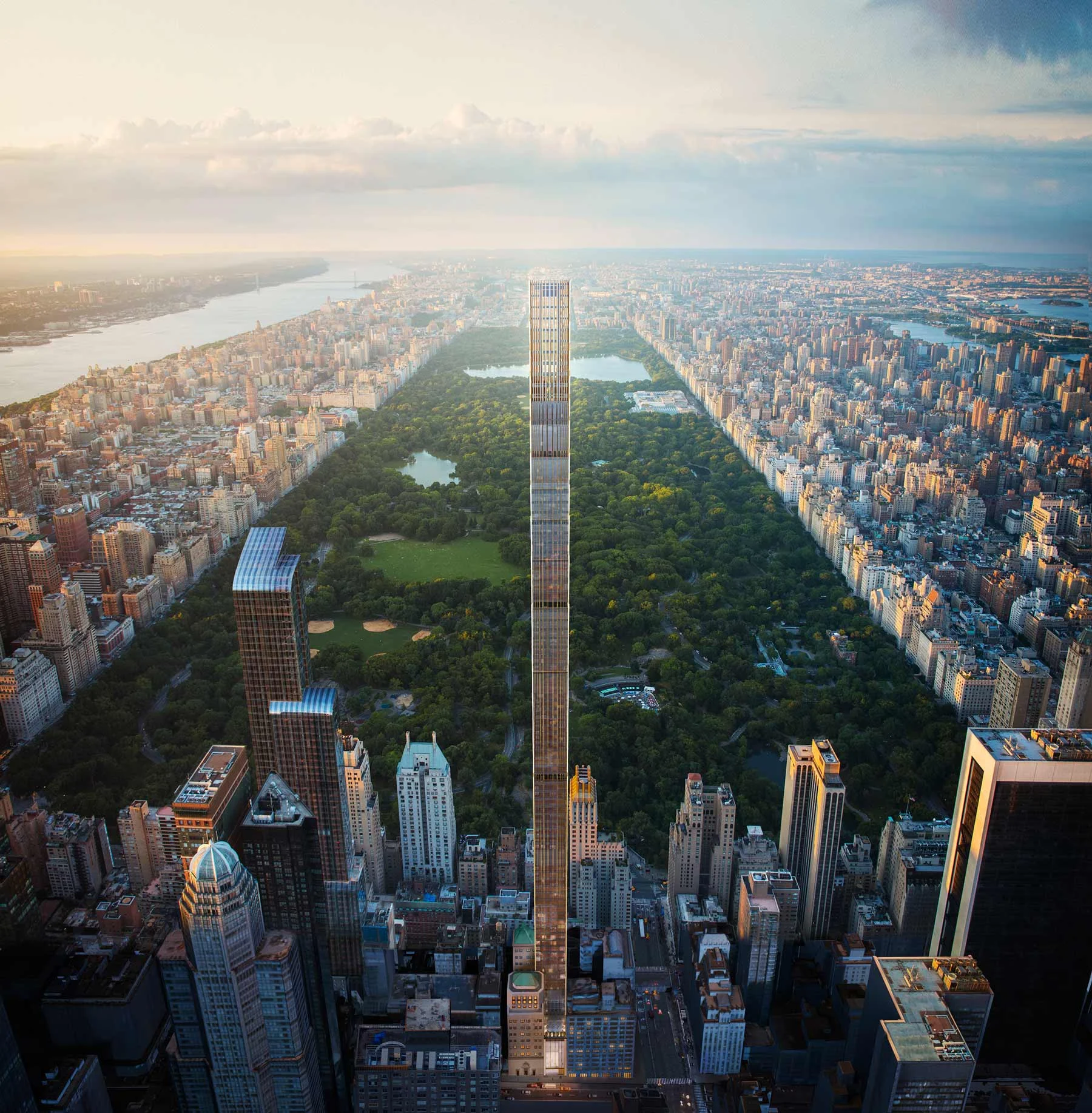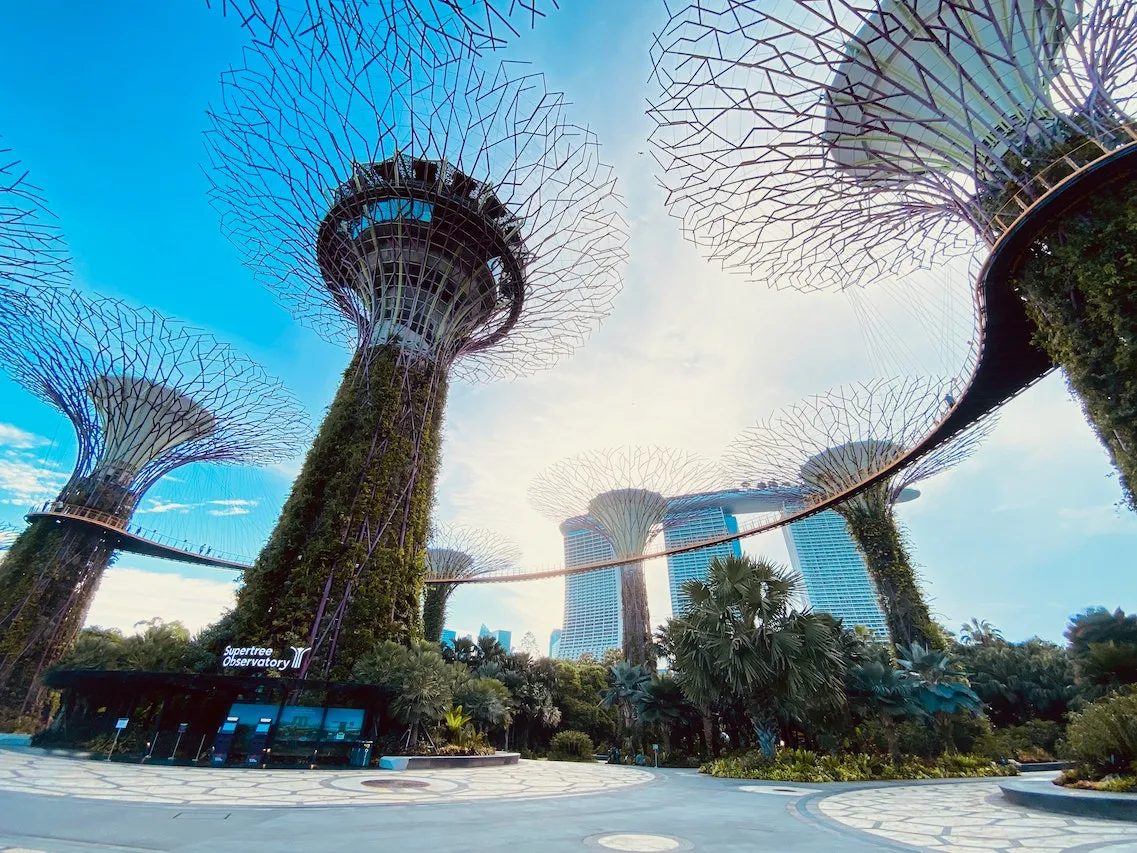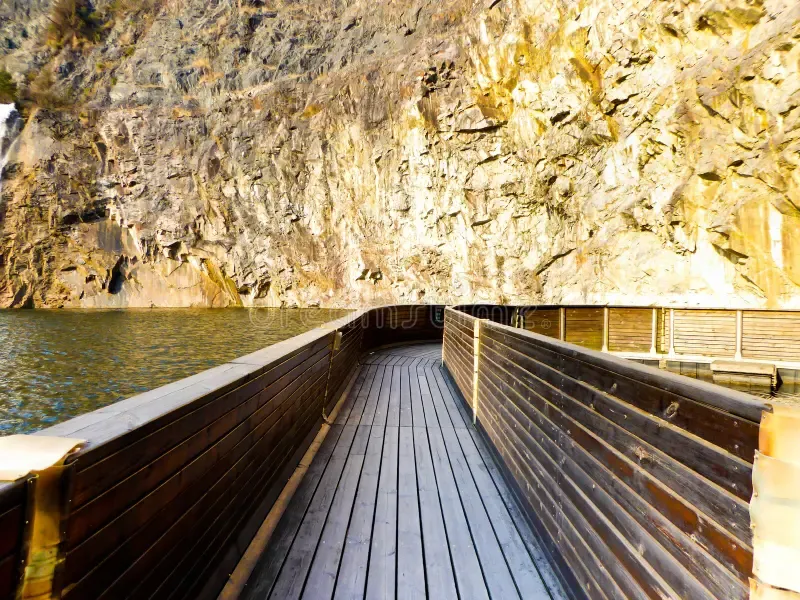Landscape Architecture: Unveiling Diverse Aspects of the Green Canvas
Exploring The Various Aspects of Landscape Architecture
"Are you tired of the same old concrete jungle? Looking for a way to add some greenery and beauty to your surroundings? Have you ever wondered about the art behind creating these picturesque landscapes?"
Well, look no further than landscape architecture! Why? Because this exciting field is all about designing and creating stunning gardens and yards, and breathtaking outdoor spaces that not only look amazing but also have a positive impact on the environment.
From parks and gardens to rooftop oases and urban plazas, landscape architecture can transform any space into a green canvas. So, if you want to learn more about this fascinating field and discover the variety of possibilities it offers, keep reading! |
| Gray concrete pathway beside pink flowers during the day, Photo by Pixabay |
In this blog, we will be diving into the world of landscape architecture and exploring its various aspects. From the principles and design techniques to the role of landscape architects in shaping the world around us, we will cover it all. So grab your gardening gloves and get ready to explore this fascinating world!
💡 Disclaimer
- Since most of the information in those two blog posts is related, I encourage you to read the first part: "Exploring and Defining the Magic of Landscape Architecture!", to ensure the seamless of knowledge, and the sequence of ideas (...)
Design Techniques: The Landscape Architecture Palette
Just like painters, landscape architects have a palette of elements at their disposal to create captivating outdoor spaces. Here are some of the colors and tools they mix and match:
1. Flora and Fauna
Plants, trees, flowers, and shrubs are the living hues that breathe life into the landscape canvas. From vibrant floral patterns to soothing green textures, they make the surroundings come alive.
- For your convenience, I am sharing a collection of AutoCAD files (.dwg format) for helping landscape architects and other designers to achieve properly their work. For more info, refer to the description of the documents you'll get below.
2. Hardscapes
This includes non-living elements like paths, patios, walls, and gazebos. They provide structure and functionality, guiding us through the landscape with purpose.
3. Water Features
From tranquil ponds to elegant fountains, water elements add a refreshing touch to any landscape, calming our senses and bringing serenity. Water features add a captivating and serene dimension to any landscaped garden or residential yard.
These carefully designed elements, such as fountains, ponds, waterfalls, or streams, infuse the space with a sense of tranquility and harmony, creating a soothing atmosphere for relaxation and contemplation. Beyond their aesthetic appeal, water features also attract wildlife, such as birds and butterflies, fostering a connection with nature. The gentle sound of flowing water serves as a natural white noise, masking unwanted background sounds and promoting a peaceful ambiance.
Whether as a focal point or a subtle addition, water features bring life, movement, and a touch of magic to outdoor spaces, making them a cherished and cherished part of any landscape design.
4. Lighting
Landscape Architects play with light and shadow, enhancing the atmosphere and creating a magical experience, even after the sun sets. Read more...
5. Art Installations
Sculptures, installations, and artistic features hold the power to transform landscapes into a realm of enchantment and contemplation. (See fig. below) With their ability to evoke emotions and spark imagination, these elements add a touch of whimsy and thought-provoking charm to outdoor spaces.
Whether it's an abstract sculpture nestled amid lush greenery or an interactive installation that engages visitors, these artistic creations become focal points that invite exploration and introspection. They serve as conversation starters, encouraging meaningful dialogues and fostering a deeper connection between people and their environment.
 |
| Sculptures, installations, and artistic features hold the power to transform landscapes into a realm of enchantment and contemplation, Photo: Pikist.com |
Moreover, artistic features inject a unique identity into the landscape, reflecting the personality and vision of the designers while leaving an indelible mark on the hearts of those who experience their magic. As they merge with nature, these artful additions become integral components of the landscape, harmonizing the human-made with the natural world and elevating the overall aesthetic and emotional experience for all who encounter them.
Sustainability in Landscape Architecture: The Eco-friendly Magic Spell
In a world where environmental consciousness is gaining importance, landscape Architects have become eco-warriors. They weave sustainability into their designs like never before. With their spells, they promote biodiversity, conserve water, and reduce carbon footprints.
Incorporating native plants that require less water and maintenance, implementing rainwater harvesting, and using renewable materials are just a few tricks they have up their sleeves to create landscapes that harmonize with nature. Read more...
The Journey of a Landscape Architect: Weaving Green Dreams into Reality (Video)
So, how does one become a Landscape Architect? Well, first, you'll need a passion for both art and nature. It's like being a nature lover with a creative streak. Many Landscape Architects pursue a degree in Landscape Architecture, where they learn the artistry and the technicalities that make their spells so effective.
After graduation, apprenticeships and internships are like their magical training grounds. Working with seasoned professionals, they gain hands-on experience and refine their skills. Want to learn more about Landscape Architect and his career?
- Check out this professional video that discusses the matter: The video is produced by Square One Landscape Architects, an Australian firm that has specialized and has been a leader in Landscape Architecture for decades. Over the past 11 years, Square One has successfully designed and built over 250 public and private projects across all scales in Australia, Asia, and Africa. A multinational team with diverse backgrounds drives an interdisciplinary approach.
Collaborating with Nature: The Landscape Architecture Essence
One of the most exciting aspects of Landscape Design is that it's a dance with nature. It's not about taming the wilderness but rather embracing its wild beauty. Nature is an ever-changing partner, and Landscape Architects adapt their spells to ensure the landscape remains harmonious with the environment.
Collaborating with Nature lies at the heart of landscape architecture, where the harmony between human-designed spaces and the natural world converges into a seamless, breathtaking tapestry. Landscape architects, as stewards of the environment, understand the intrinsic value of working hand in hand with nature's inherent beauty and processes.

Follow the latest developments and news on our Google News website.
Follow Our WebsiteThrough thoughtful planning and design, they seek to enhance and preserve the ecological integrity of the land, mitigating the impact of urbanization and promoting sustainability. By integrating native flora, ecological corridors, and sustainable practices, landscape architects create spaces that not only captivate the senses but also foster a sense of belonging and ecological balance.
This dynamic collaboration with Nature not only enriches the human experience but also serves as a poignant reminder of the reciprocal relationship we share with the environment, inspiring a deeper appreciation for the delicate dance between humanity and the natural world.
Notable Projects and Their Pioneers of Landscape Architecture
In the realm of Landscape Architecture, there have been awe-inspiring projects that have left an indelible mark on our world, elevating the art of designing outdoor spaces to extraordinary heights. Let's embark on a journey to discover some of these remarkable projects and the visionary pioneers behind them.
1. Central Park, New York City, USA
Central Park, the iconic oasis nestled amidst the bustling heart of New York City, is a testament to the brilliance of Frederick Law Olmsted and Calvert Vaux, the pioneering duo who envisioned this urban sanctuary in the mid-19th century. Completed in 1873, Central Park spans over 843 acres, harmoniously blending pastoral landscapes, serene lakes, and meandering pathways.
 |
| Aerial Photography of Central Park and Buildings in New York City, Photo by Sami Abdullah |
Olmsted and Vaux's design was groundbreaking, as it seamlessly integrated natural elements with the city's urban fabric. Their vision was to create a space that offered respite from the concrete jungle, providing city dwellers with a place to connect with nature, regardless of social or economic background. Central Park has become an enduring symbol of urban planning and a haven for millions of visitors each year.
 |
| Another breathtaking view of Central Park in NYC, Photo: www.6sqft.com |
2. Gardens by the Bay, Singapore
In the bustling metropolis of Singapore, Gardens by the Bay stands as a futuristic marvel and a testament to sustainable landscape architecture. This award-winning project, designed by landscape architect Grant Associates, exemplifies the seamless integration of nature and technology.
Spanning over 250 acres, the gardens are home to a spectacular collection of flora from around the world, housed within two enormous conservatories - the Flower Dome and the Cloud Forest. The iconic Supertree Grove, with its vertical gardens and solar panels, provides a stunning visual display while harnessing solar energy.
Gardens by the Bay showcases the pioneering spirit of Singapore's approach to sustainable urban planning, redefining the city's skyline and setting new standards for green spaces in the 21st century.
 |
| Gardens by the Bay in Singapore, Photo by Victor Soh |
3. The High Line, New York City, USA
Transforming an abandoned railway into a unique urban park, The High Line is a celebrated success in contemporary Landscape Architecture.
The project, led by landscape architect James Corner Field Operations and architectural firm Diller Scofidio + Renfro, was completed in 2009.
Located on Manhattan's West Side, The High Line is a linear park elevated above street level, offering an elevated walkway adorned with native plants, art installations, and breathtaking views of the cityscape. It serves as a model for adaptive reuse, blending industrial elements with carefully curated natural landscapes.
The park has become a beloved urban retreat, drawing locals and visitors alike, and inspiring similar projects worldwide.
(Image by Shire777 from Pixabay)
4. The Bosco Verticale, Milan, Italy
In the heart of Milan, the Bosco Verticale, or Vertical Forest, designed by architect Stefano Boeri, reimagines high-rise living sustainably and innovatively. Completed in 2014, this residential complex comprises two tower blocks entirely covered in lush vegetation, from which it has a global reputation.
 |
| The famous Bosco Verticale in Milano, Italy. Photo: Pinterest |
The concept behind the Bosco Verticale is to promote biodiversity in dense urban areas and enhance air quality. The towers are home to over 900 trees, along with a variety of shrubs and plants, creating a living ecosystem that not only captivates the eye but also contributes to the well-being of residents and the environment.
5. The Quarry Garden, Shanghai, China
Designed by landscape architect Yu Kongjian and his firm, Turenscape, the Quarry Garden in Shanghai is a mesmerizing example of the marriage between human ingenuity and nature's raw beauty. Located within a reclaimed abandoned quarry, the project aimed to restore the site's ecological balance while creating a captivating public space.
The Quarry Garden features steep cliffs, cascading waterfalls, and a diverse array of plant life, all carefully designed to mimic natural processes and attract local wildlife. It showcases China's commitment to ecological restoration and sustainable development, setting an example for the integration of ecological conservation with urban expansion.
 |
| The Quarry Garden features steep cliffs, cascading waterfalls, and artificial lakes, Photo: www.thumbs.dreamstime.com |
Final Thoughts: Where Nature and Vision Converge
In the previous section, these remarkable projects and their visionary pioneers have shown us that Landscape Architecture is more than just designing pretty gardens. It's about weaving magic into our urban environments, fostering a sense of harmony between humans and nature, and embracing sustainability as a guiding principle.
From the sprawling greens of Central Park to the futuristic landscapes of Gardens by the Bay, each project and its visionary architect have left a lasting impact on the world, inspiring future generations of Landscape Architects to continue the journey of creating awe-inspiring spaces that celebrate the beauty of our natural world.
As we move forward, let us draw inspiration from these pioneers and their masterpieces, and continue to create landscapes that not only mesmerize the eyes but also nurture the soul.
.png)







